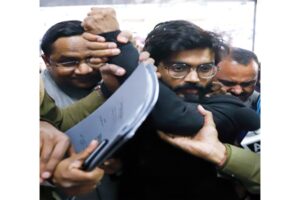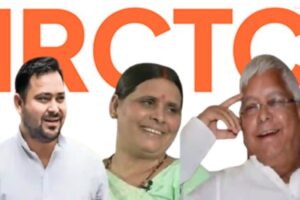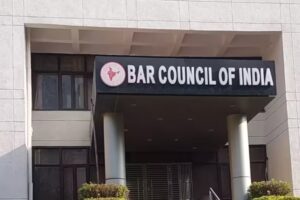
Former AAP councillor Tahir Hussain argued in court on Friday that the WhatsApp chats presented by the Delhi Police as evidence against him didn’t incite violence.
The proceedings took place before Additional Sessions Judge Sameer Bajpai, who was considering whether to frame charges against Hussain and others in a case alleging a “larger conspiracy” behind the 2020 riots in Northeast Delhi, which resulted in over 50 deaths and numerous injuries.
Hussain’s lawyer contended that the prosecution’s reliance on WhatsApp conversations to demonstrate Hussain’s involvement in inciting the riots was misplaced. He asserted that the messages in question did not instruct individuals to engage in violence.
“Nowhere in these chats are people asked to pick up weapons against the Indian government or its agencies,” the counsel stated.
The defense highlighted that the discussions in the chats centered on peaceful protests, questioning whether a “chakka-jam” (road blockade) could be classified as a “terrorist activity.” The Delhi Police’s Special Cell, which is investigating the case, has compiled various forms of evidence, including these chats, witness statements, and CCTV footage.
Earlier, on October 25, Hussain claimed that conversations about protests against the Citizenship (Amendment) Act (CAA) should not be interpreted as acts of insurgency or armed rebellion. He emphasized that advocating for peaceful demonstrations is not tantamount to promoting violence.
Hussain is among 20 individuals, including activists Sharjeel Imam and Khalid Saifi, who have been charged under the Unlawful Activities (Prevention) Act and multiple sections of the Indian Penal Code. They are accused of being “masterminds” behind the February 2020 communal riots that led to the tragic loss of 53 lives and left over 700 people injured.
As the hearing continues, the court is tasked with determining the validity of the charges and whether the evidence presented justifies moving forward with the case. The implications of this case are significant, not only for those directly involved but also for broader discussions regarding free speech, protests, and state responses to civil unrest in India.
The outcome may set important legal precedents regarding the interpretation of digital communications in the context of public protests and civil rights.




